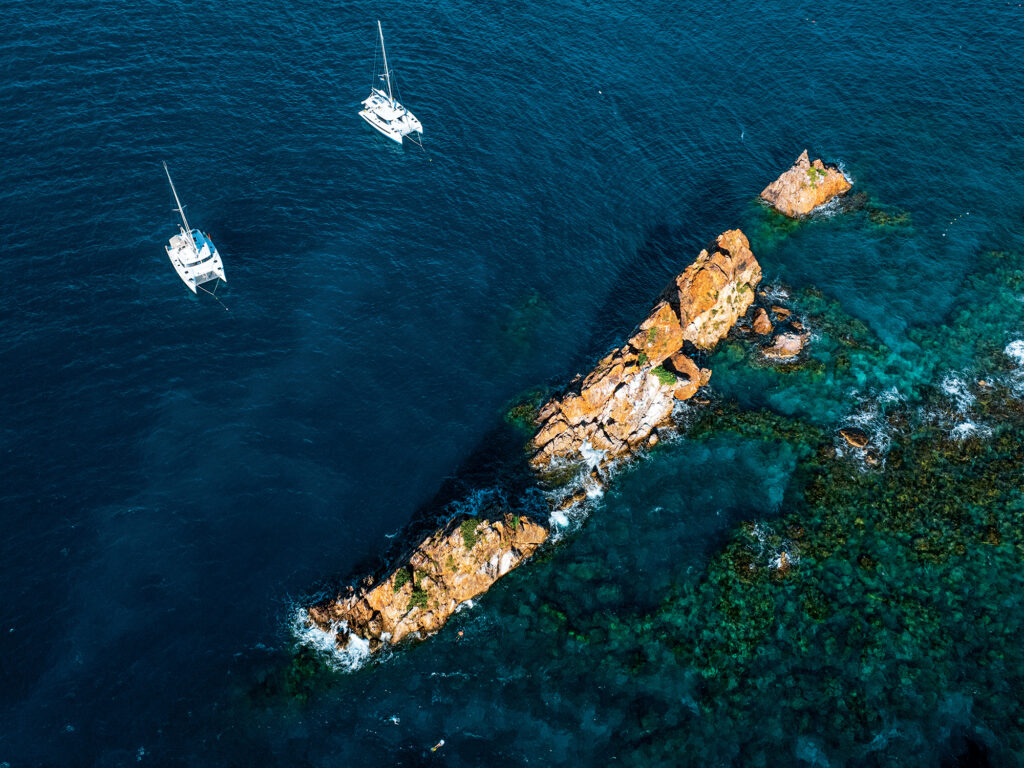
It was a stunning, sensational, even quintessential December morning off Jost Van Dyke in the always alluring British Virgin Islands. Back home in New England, I’d just learned, the season’s first nasty nor’easter had kicked in—a preview of winter’s coming attractions. But there I was in shorts, and barefoot, warm and happy. I had a hot cup of coffee in my hand, and someone was thoughtfully streaming one of my favorite recording artists, Tom Petty, whose “A Higher Place” was the perfect soundtrack on the inviting forward trampoline of the Moorings catamaran.
A good 15 to 25 knots of staunch, easterly trade winds—the so-called Christmas trades—were in full voice. With my hair whipping in the breeze, it occurred to me that it was an absolutely stellar day to reef down, strap up, and go for a cracking-good sail.
But there would be no sailing for me on this day, or on any of the ensuing ones during our quick charter trip through the BVI. No, the twin-hulled vessel on which I was perched was—gasp!— a Moorings 464PC power cat.
Suddenly, I came to the sobering realization that, at least temporarily, I was likely in the midst of abandoning my very roots and selling my sailing soul. And I was having a decidedly difficult time coming to terms with it.
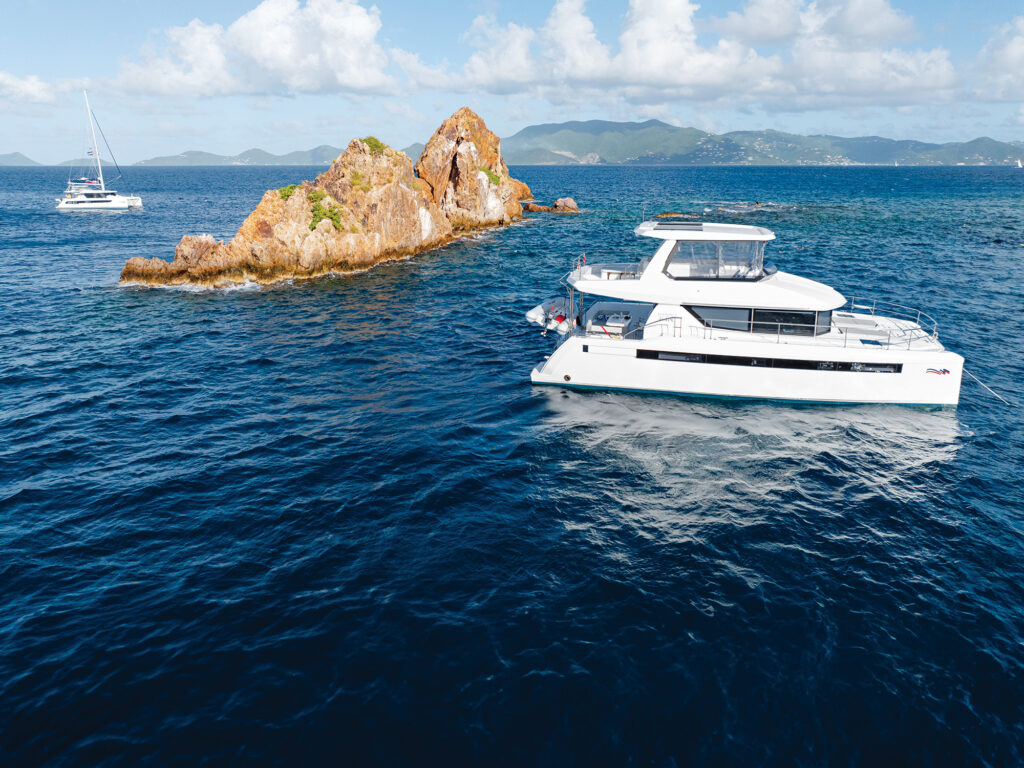
I’ve always fancied myself an all-around waterman. I got my scuba diving card decades ago, and I really enjoy open-ocean swimming. My current personal armada includes three kayaks, two surfboards, a good rowboat, and two sailboats: a daysailing Pearson Ensign and a full-fledged Pearson 365 cruising boat. Note what isn’t there, and never has been: a powerboat. Alas, I’ve spent my entire career advocating for and endorsing the sanctity of sail.
Well, all that said, a guy has to make a buck. I’d been hired to host a pair of Moorings videos for the company’s two new power cats, the 464 and the 403PC. So, this was a press junket of sorts, giving me an opportunity to become familiar with the boats. It doesn’t mean I wasn’t a little unsettled by the experience. Then again, I was in the BVI. It was time to buck up, old boy, and get on with it.
Virgin Gorda is a pretty good place to do just that. After we dropped the mooring in Jost and made our way up the windswept, whitecapped Sir Francis Drake Channel, I had my first revelation regarding my current situation: No, we weren’t sailing. But neither were any of the sailboats darting hither and yon, all of which were proceeding under power, just like us. It was too darn breezy.
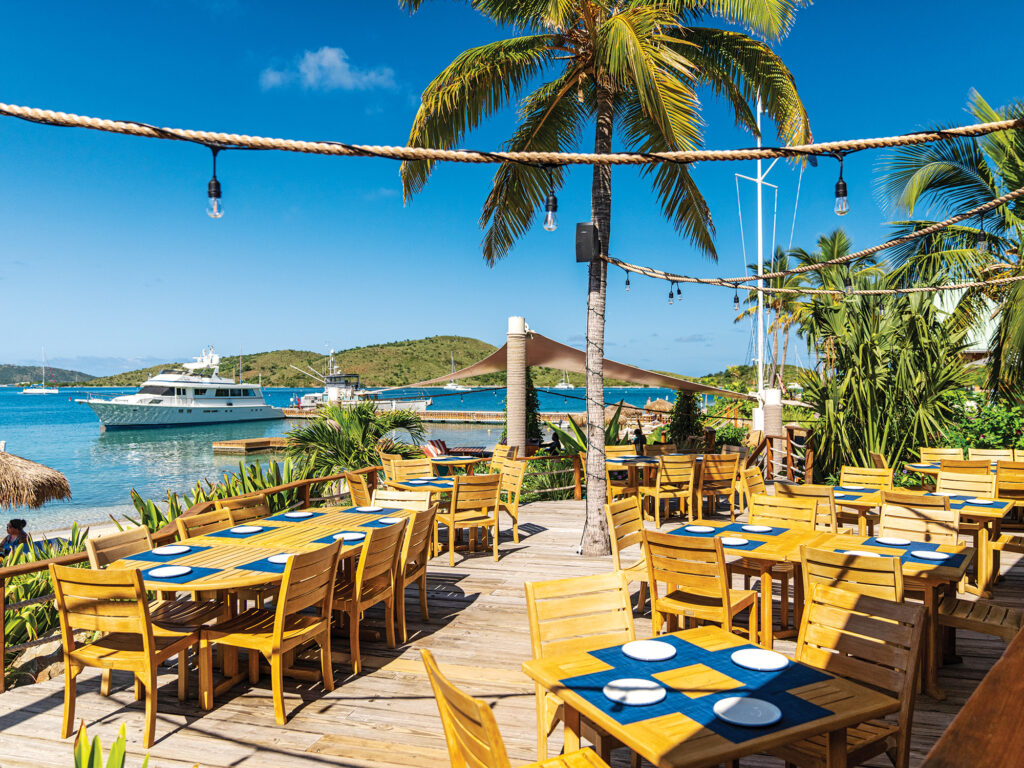
We tied up at the Bitter End Yacht Club, and it was truly great to see the iconic island destination slowly coming back to life after getting flattened a few years back by Hurricane Irma. The highlight of our overnight stay was the next morning’s sweaty hike up the hill behind the resort, followed by a refreshing dip and a couple of eye-opening bloody marys at the convenient bar right alongside the beach. My trepidation about my situation was slowly beginning to wane. As it did on the next leg of our journey.
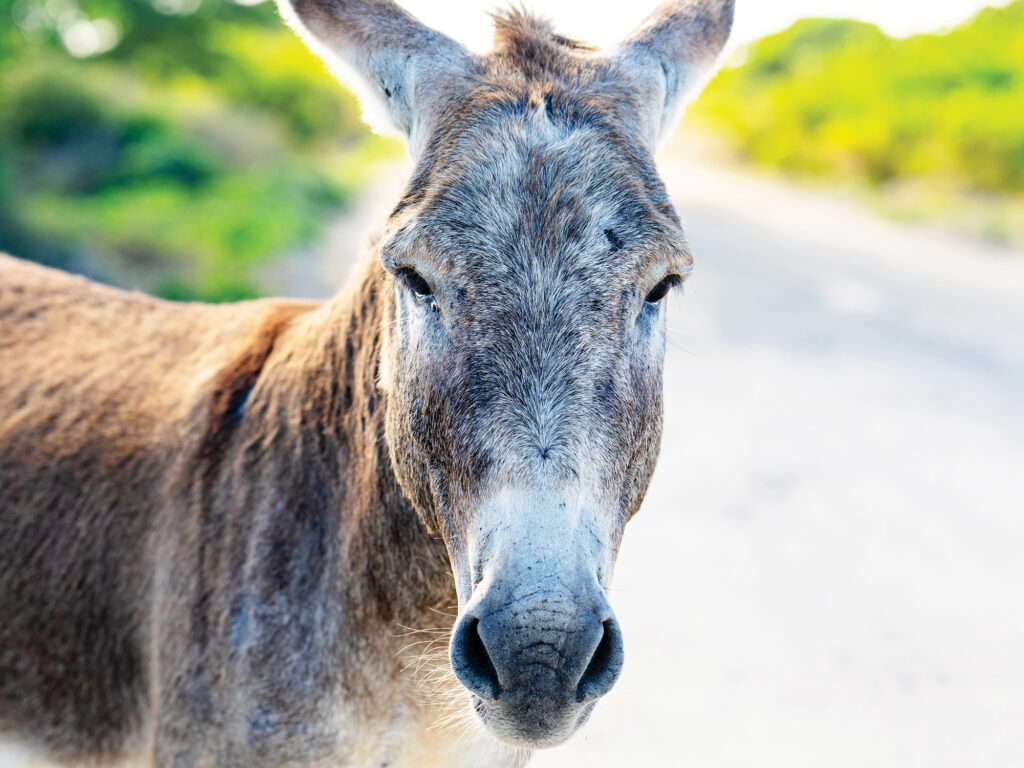
Thanks to a tip from a local, we exited Virgin Gorda through an extremely narrow, very shallow cut between Anguilla Point and Mosquito Island, something we never would’ve gotten away with on a keelboat. Advantage, power cat. From there, we were bound for one of my favorite islands in all of the Caribbean: low-lying Anegada, the outlying isle encircled by coral reefs some 10 miles north of Virgin Gorda. I’d not visited the place in my previous pair of trips to the BVI simply because of a time crunch. You really need to invest three days for an Anegada visit—a day over, a day there and a day back—which is often a bridge too far when trying to cram all sorts of activities into a weeklong sailboat charter.
You know where I’m going with this. The power catamaran solved this dilemma posthaste. With the throttles down at 3,100 rpm, we flew to Anegada at a tidy 16-plus knots. Once there, our photographer proclaimed that he was enjoying our steed for a reason that never would’ve occurred to me: It’s much easier to catch a drone without a mast.
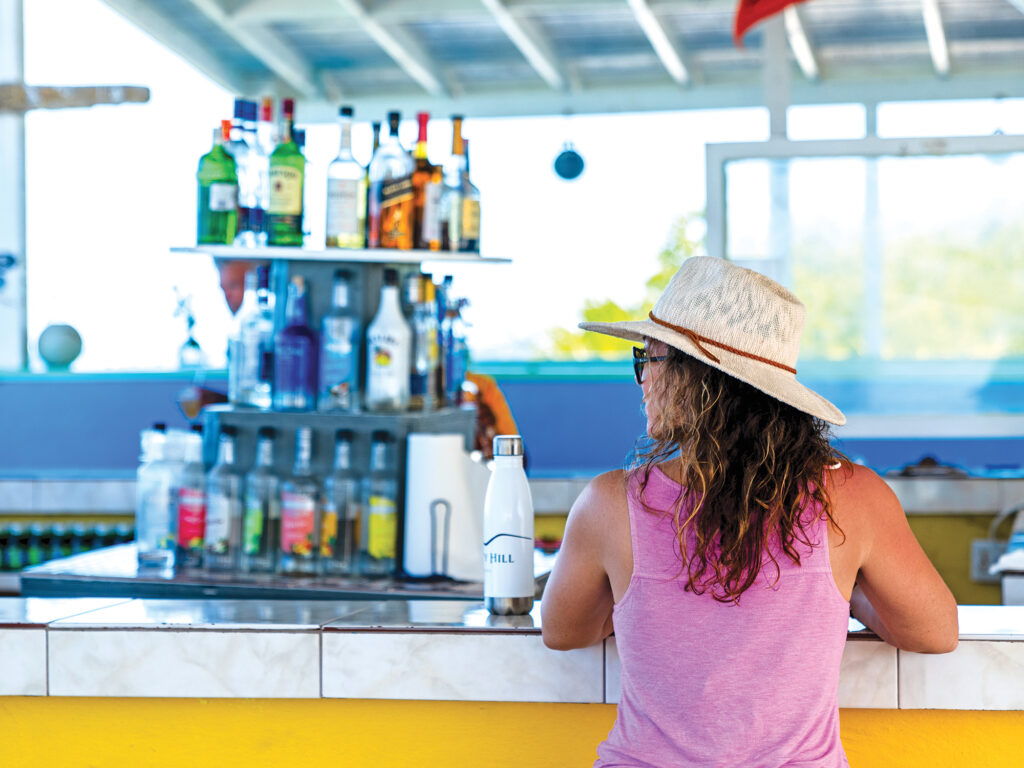
Our quick trip over meant we had plenty of time to do all the things one wishes to do in Anegada. Rent a car. Hit Loblolly Beach for a snorkel and lunch. Search for the pink flamingos. Patronize a couple of beach bars. Your basic perfect day.
Back on the boat, hanging off the mooring lines after yet another wonderful swim, I could glance back with a view through the twin hulls to catch the sunset framed between them. Pretty cool. And once darkness settled in, the underwater lights off our transom proved to be a tarpon magnet. We sipped our drinks with the super-cool water-world show just a few tantalizing feet away. We’d basically brought our own aquarium with us.
With our abbreviated trip coming to its conclusion, we had one more stop, at the Bight on Norman Island. Ironically, by this time, the breeze had temporarily frittered away, and guess what? In these calm conditions, the sailboats still weren’t sailing.
The harbor was chock-full of vacationing mariners, but thanks to our big twin diesels, we were there in time to pick up one of the last moorings. I’m not always the sharpest tool in the shed, but I was beginning to see the advantages of this power-cat situation. If anyone ever asked my advice about a BVI charter for a first-timer, here’s what I’d say: If you’re a sailor, unequivocally, you must book a good sailboat for your adventure. There’s too much nautical history and lore not to sample the archipelago’s joys and challenges as the first explorers did, under glorious sail. But if you’re on your second or third or fourth visit? Hmm. Those power cats are pretty convenient.
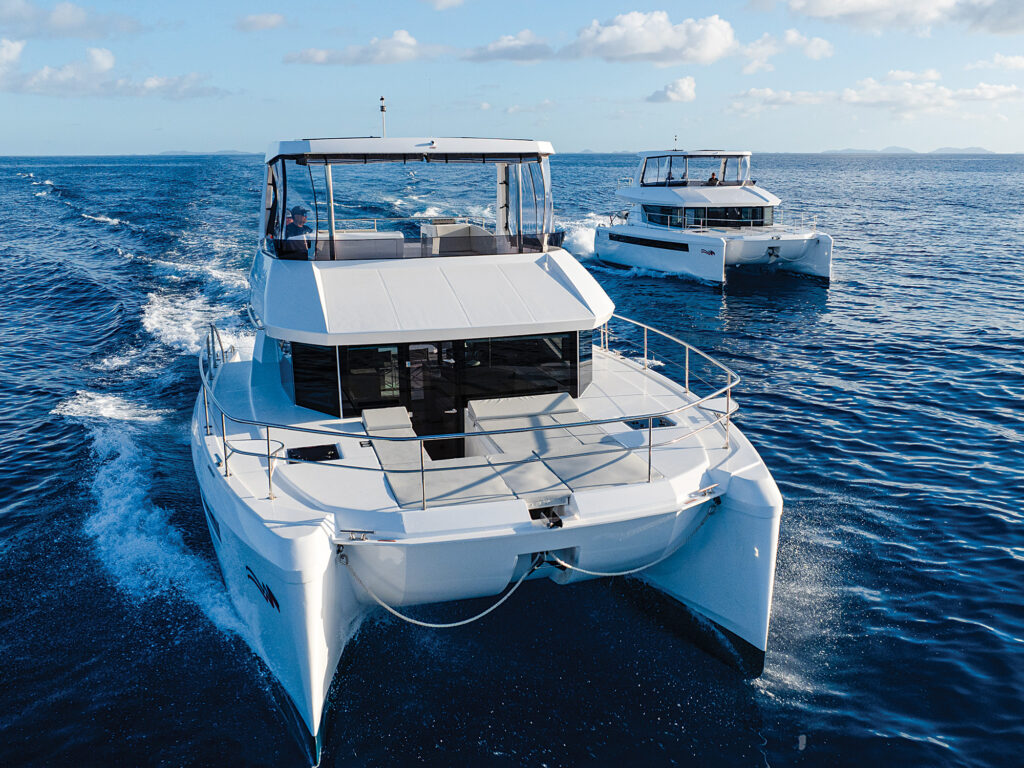
Still, I was seriously conflicted about writing a magazine story espousing the benefits of power cruising. Our photographer was sympathetic and said, “You could title it ‘Low Sodium: The Retractions of a Salty Man.’” Even for me, that sounded pretty pretentious. Then he broke it down into something simpler to understand: “Look, man, you were afloat.”
And that struck a chord. His simple statement has really been the common denominator of my entire existence. I’ve always been an equal-opportunity lover of the water, whatever the conveyance, from my own eclectic fleet to a bloody pool toy. Whatever gets you out there, gets you out there. There’s no wrong way to do it.
And that was that. I had reached the happy and consolable conclusion that I hadn’t really been power-cat cruising, not at all. No, mon, as they say in the islands. I’d been floating.
Herb McCormick is a CW editor-at-large.
Power-Cat Ownership The Moorings’ Way
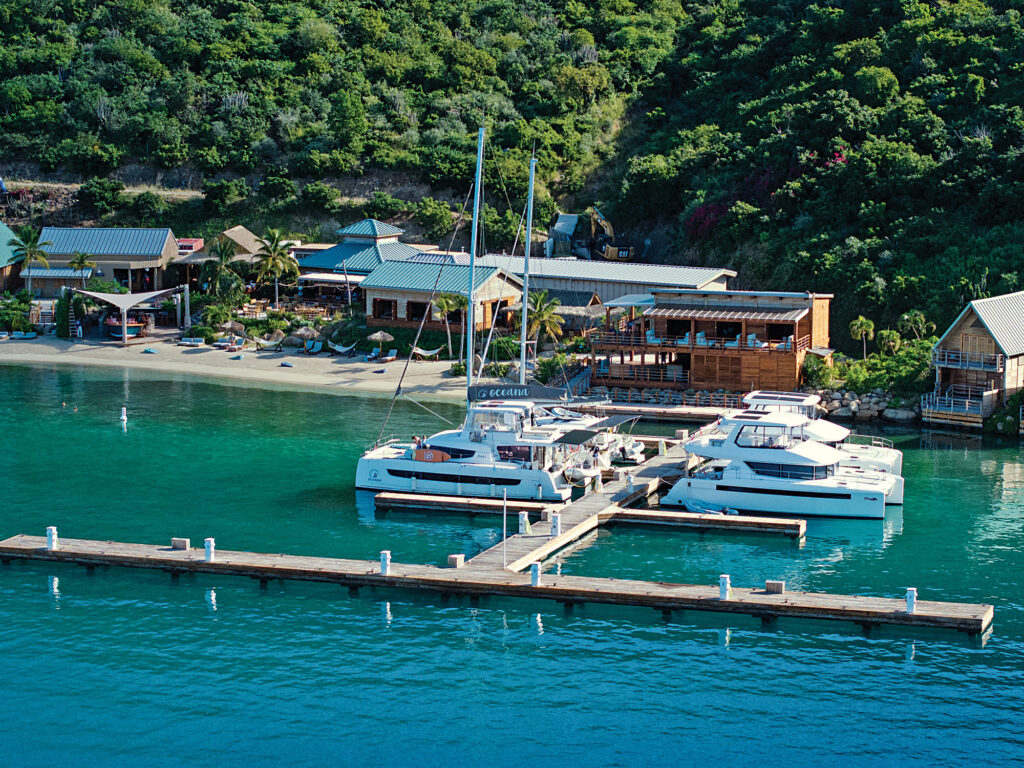
As of this writing, The Moorings has a pair of power catamarans available in its yacht-management program at Tortola. Both were built in South Africa by Robertson & Caine, which also produces the Leopard line of sail and power cats. The Moorings 403PC is powered by a pair of 320 hp Yanmar diesels and has a cruising speed of 15 knots. The Moorings 464 is also powered with a pair of twin Yanmars and is laid out in a four-head, four-stateroom configuration.
Franck Bauguil, Moorings’ vice president of yacht ownership and product development, says that it’s a great program for mariners who charter multiple times each year. “If you’re going to go only once a year, or every other year, just charter a boat, don’t buy it,” he says. However, if you go three or four times a year, on trips that can cost up to $25,000 apiece, the Moorings package is well worth considering.
“The program has been around for a long time,” he says. “So it’s well-known among sailors, but not as much with powerboaters. Our fleet of boats is all privately owned, but we take care of operations and management. You buy the boat, you own it and name it; it’s very much a regular purchase. But with that purchase comes a management agreement where we maintain the boat on behalf of the owner and charter it to a third party when they’re not using it.”
As with any boat purchase, owners can lay down the cash or go the finance route. For the latter, what’s the cost? The numbers as of this past fall showed that most owners put down 20 to 25 percent of the cost of the yacht, which, in the case of The Moorings’ 403PC, was about $1 million, with a down payment just shy of $200,000. At 8.25 percent interest on a 20-year loan, the monthly payment of about $6,700 was offset by the guaranteed income of just under $7,500 per month. Management contracts generally run five or six years, after which the owner can keep the boat, trade it in, or have The Moorings’ brokerage operation place it for sale.
For personal usage, owners receive 84 points per year, with the cost of trips equating to two points per day. Of those 84 points, 42 can be used to reserve trips in advance, and 42 can be employed on short notice. Generally, this breaks down to four to six weeks per year of in-season trips, or up to 12 weeks per year of cruising in the off-season. —HM








